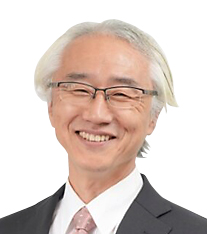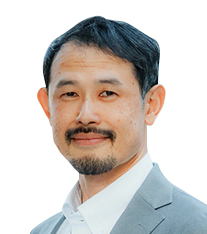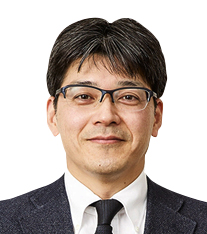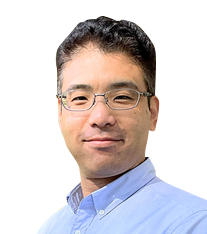- JST Home
- /
- Strategic Basic Research Programs
- /
 CREST
CREST- /
- Research Director/
- Fundamental Technology for Semiconductor-Device Structures Using Nanomaterials/
- [Nano-material semiconductors] Year Started : 2024
[Nano-material semiconductors] Year Started : 2024
Akira Oiwa
Semiconductor quantum technology based on industrial-grade Ge quantum materials
Grant No.:JPMJCR24A1
Research Director
Akira Oiwa

Professor
SANKEN
The University of Osaka
Collaborator
| Haruki Kiyama | Associate professor Graduate School and Faculty of Information Science and Electrical Engineering Kyushu University |
| Tetsuo Kodera | Associate Professor School of Engineering Institute of Science Tokyo |
Outline
This project aim to develop the innovative quantum technologies of Ge hole-spin qubits for their large-scale integration with quantum connectivity, superconducting junctions, and electron/hole quantum optics using industrial-grade strained Ge quantum well wafers, and to bridge quantum technology developed in academic laboratries to industrial technology by adapting these technologies to semiconductor industrial processes. This project will be promoted under a strong French-Japanese collaboration, including the Laboratoire d’électronique des technologies de l’information of Commissariat à l’énergie atomique et aux énergies alternatives (CEA-Leti), a world-class research institute of semiconductor industrial fabrication.
Yutaka Ohno
Formation of non-trap interfaces in nanomaterial devices
Grant No.:JPMJCR24A2
Research Director
Yutaka Ohno

Professor
Institute of Materials and Systems for Sustainability
Nagoya University
Collaborator
| Shunto Arai | Independent Scientist Research Center for Macromolecules and Biomaterials National Institute for Materials Science (NIMS) |
| Susumu Okada | Professor Institute of Pure and Applied Sciences University of Tsukuba |
Outline
To comprehensively understand the interfaces of low-dimensional semiconductors without dangling bonds on their surfaces, we aim to clarify the guiding principles of interface formation through both experimental and theoretical approaches. In particular, by not only ensuring the cleanliness of the surfaces but also introducing insulating materials that lack dangling bonds, we will aim to establish non-trap interface formation technology. Ultimately, we will demonstrate the application of this technology in low-noise amplification circuits that benefit flexible sensors.
Kosuke Nagashio
Establishment of wafer-scale vdW epitaxy and construction of process technology for 2D-CMOS integration
Grant No.:JPMJCR24A3
Research Director
Kosuke Nagashio

Professor
School of Engineering
The University of Tokyo
Collaborator
| Vincent Tung | Professor School of Engineering The University of Tokyo |
| Takahiro Nagata | Group leader Research Center for Electronic and Optical Materials National Institute for Materials Science |
Outline
In this project, we propose to grow single crystals of N-type MoS2 and P-type WSe2 on a c-plane sapphire substrate by vdW epitaxy, and to demonstrate CMOS inverter operation. Our goal is to achieve a mobility of 50 cm2/Vs or more, which is an indicator of crystallinity, and a gain of 100 or more at Vdd=1V, which is an indicator of CMOS inverter operation.
Yuhei Hayamizu
The Development of Graphene Biosensors Based on Peptide Interface Technology
Grant No.:JPMJCR24A4
Research Director
Yuhei Hayamizu

Associate Professor
School of Materials and Chemical Technology
Institute of Science Tokyo
Collaborator
| Takahisa Tanaka | Associate Professor Faculty of Science and Technology Keio University |
| Takeshi Fukuma | Director・Professor Nano Life Science Institute Kanazawa University |
Outline
Existing biosensors have difficulty detecting low-molecular-weight, nonpolar molecules like odor molecules with high sensitivity and selectivity. While graphene can detect nonpolar molecules with high sensitivity, it requires surface modification techniques to improve target selectivity and prevent nonspecific detection. This research aims to develop a high-performance graphene biosensor based on a new signal transduction mechanism using peptide surface modification technology, with the goal of realizing digital olfaction technology.
Kazunari Matsuda
Construction and application of quantum optical platforms based on two-dimensional semiconductors and heterostructures
Grant No.:JPMJCR24A5
Research Director
Kazunari Matsuda

Professor
Institute of Advanced Energy
Kyoto University
Collaborator
| Susumu Okada | Professor Institute of Pure and Applied Sciences University of Tsukuba |
| Junko Ishi-Hayase | Professor Faculty of Science and Technology Keio University |
| Kenji Watanabe | Researcher Research Center for Electronic and Optical Materials National Institute for Materials Science |
Outline
We define two-dimensional semiconductor quantum optical platforms as a new pathway for optical science and technology in two-dimensional semiconductors, 1) a single quantum two-level system defined by defects in wide-gap two-dimensional semiconductors and 2) a huge number of integrated quantum two-level systems with moire excitons in transition-metal dichalcogenides. We explore and promote the scientific applications of new two-dimensional semiconductor quantum optical platforms.













